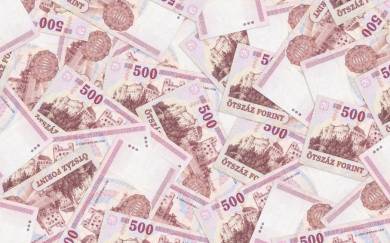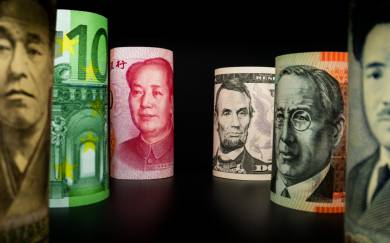Asia Marekt: Bank Indonesia Will Remain Hawkish Due To Rise In Core Inflation

ING Economics 01.12.2022 09:28
Asian markets rally on China re-opening hopes and dovish Powell speech. Indian 3Q22 GDP better-than-expected, but Korean trade data was very weak and further weakness is expected from China's Caixin indices
In this article
Macro outlook
What to look out for: Fed speakers and US jobs report
shutterstock
Macro outlook
Global Markets: It looks as if Fed Chair Powell didn’t get the memo to push back against pivot hopes and keep financial conditions tight before he went to give his speech at the Brookings Institution yesterday. It was at best a neutral speech, acknowledging that rate hikes might be reduced in magnitude as early as the December meeting, but on the other hand, noting that there was still work to be done. But it also threw in a couple of what can only be described as dovish remarks - namely that the Fed didn’t want to overtighten (no, but don’t tell the market that!). And also that he thought the economy could achieve a “soft landing”. Yes, that would be nice, but wouldn’t it have been better not to cloud the message with growth aspirations that possibly undermine the Fed’s single-mindedness to bring down inflation? It is going to be very hard now for the Fed to push back at market pivot hopes. So let’s hope that inflation does keep on falling, or this may look like a missed opportunity. Equities rallied hard following Powell’s speech. That’s not the direction we would have expected from the speech we think the market needed to hear. The S&P500 rose 3.09% and the NASDAQ rose 4.41%. Chinese stocks yesterday were also strong as re-opening hopes continue to provide support. The key to the “success” or otherwise of Powell’s speech yesterday, though, probably lies more in the US Treasury response. 2Y US Treasury yields fell 16.3bp to only 4.31%. 10Y US Treasury yields fell 13.9bp to 3.605%. The May 2023 implied rate from Fed funds futures has dropped all the way back to 4.925%. A couple of days ago, it was almost 5.0%. It’s no surprise, given all of this, to see the EURUSD exchange rate back above 1.04. The AUD has surged almost all the way back to 0.68, Cable is back up to 1.2069 and the JPY is looking stronger than for some time at 137.83. Asian FX was pretty strong yesterday, led from the front by the CNY which is still betting on re-opening, and by the high beta currencies, KRW and THB. More of the same seems likely today. US financial conditions look well and truly eased.
G-7 Macro: For those who like backwards-looking employment data, yesterday’s October JOLTS survey showed a further small decline in job openings, though the measure did not fall as much as had been expected, not that we think the markets would have paid much heed even if it had. More importantly, the ADP survey came in much weaker at 127,000, down from last month’s 239,000. If we got a figure like that for tomorrow’s US non-farm payrolls (expected 200,000), then that really would be grounds for further declines in bond yields, dollar weakness and equity gains. Though we would caution that payrolls rarely move in lock step with its monthly indicators, and nothing is certain until the data is printed. Today, the main market risk comes from the PCE deflator figures for October. A lot of attention has been placed on whether the core PCE rate will decline or not, given the differences in the scope of PCE compared to CPI and their different weightings. The market is betting on a very small decline in the core PCE inflation rate to 5.0%YoY from 5.1%. And while we don’t disagree, the risk is probably skewed to a higher figure, and perhaps no change in the inflation rate. Maybe after the big market swings yesterday, that would be a better way to be positioned. The US manufacturing ISM index completes the data for today.
China: The Caixin manufacturing PMI should indicate that the activity of smaller manufacturers contracted further in November compared to a month ago. Rising Covid cases, together with shrinking exports, added pressure on exporters. Local government officials will likely exercise Covid measures with an intent to reduce their impact on the economy even if there are no further imminent changes in the overall Covid rules.
South Korea: Preliminary GDP rose 0.3%QoQ sa in the third quarter, the same as the advanced estimate. However, the details have changed slightly. By expenditure, private consumption (1.7% vs 1.9% advanced) and construction (-0.2% vs 0.4% advanced) were lowered, while facility investment was revised up to 7.9% (vs 5.0% advanced) as machinery and transportation investment increased. Meanwhile, exports continued to fall -14.0% YoY in November (vs -5.7% in October, -11.2% market consensus) for the second straight month. Imports continued to rise, but at a slower pace, only 2.7% in November (vs 9.9% in October, 0.5% market consensus), resulting in the trade deficit widening to -7.0bn USD (vs -6.7bn in October). Semiconductor exports (-29.8%) and exports to China (-25.5%) were particularly weak. The nationwide truckers’ strike is adding more burden on manufacturing and exports. Considering the sluggish October IP outcomes from yesterday and sluggish exports this morning, the downside risk for the current quarter’s GDP forecast (-0.1% QoQ) has increased.
Japan: 3Q capital spending rose 9.8% YoY (vs 4.6% in 2Q, 6.4% market consensus), which is not in line with 3QGDP results. And based on today’s stronger-than-expected capital spending, Japan’s revised 3QGDP is likely to improve from the advance figure which showed a 0.3% QoQ sa contraction.
Indonesia: November inflation will be reported today. Market consensus points to a softening in headline inflation to 5.5%YoY (from 5.7%) but core inflation may pick up to 3.4%. The steady rise in core inflation should be enough to keep Bank Indonesia hawkish with Governor Warjiyo likely following through with a rate hike to close out the year.
India: Yesterday evening, India published 3Q22 GDP data. Please read our short snap for more detail. The short version is that at 6.3%YoY, growth exceeded expectations and apart from an outsize drag from imports, there was nothing in the 3Q data to set off alarm bells for the 4Q figure. As such, it will only take a very moderate further growth to ensure that at least a 6% GDP growth rate is achieved for the calendar year 2022. If so, that would be one of the fastest growth rates in Asia. Fiscal deficit figures yesterday were a little less encouraging, with a big year-over-year jump which if repeated next month, could threaten the government’s fiscal deficit target for FY 2022/23 of 6.4%.
What to look out for: Fed speakers and US jobs report
South Korea 3Q GDP and trade (1 December)
Regional PMI (1 December)
China Caixin PMI (1 December)
Indonesia CPI inflation (1 December)
US personal spending, PCE core deflator, initial jobless claims and ISM manufacturing (1 December)
Fed’s Cook, Bowman, Logan, Barr and Powell speak (1 December)
South Korea CPI inflation (2 December)
Fed’s Evans speaks (2 December)
US non-farm payrolls (2 December)
TagsEmerging Markets Asia Pacific Asia Markets Asia Economics
Disclaimer
This publication has been prepared by ING solely for information purposes irrespective of a particular user's means, financial situation or investment objectives. The information does not constitute investment recommendation, and nor is it investment, legal or tax advice or an offer or solicitation to purchase or sell any financial instrument. Read more

 ING Economics 24.05.2022 10:16
ING Economics 24.05.2022 10:16



 TeleTrade Comments 05.10.2022 13:06
TeleTrade Comments 05.10.2022 13:06




 Kamila Szypuła 21.12.2022 11:23
Kamila Szypuła 21.12.2022 11:23






























